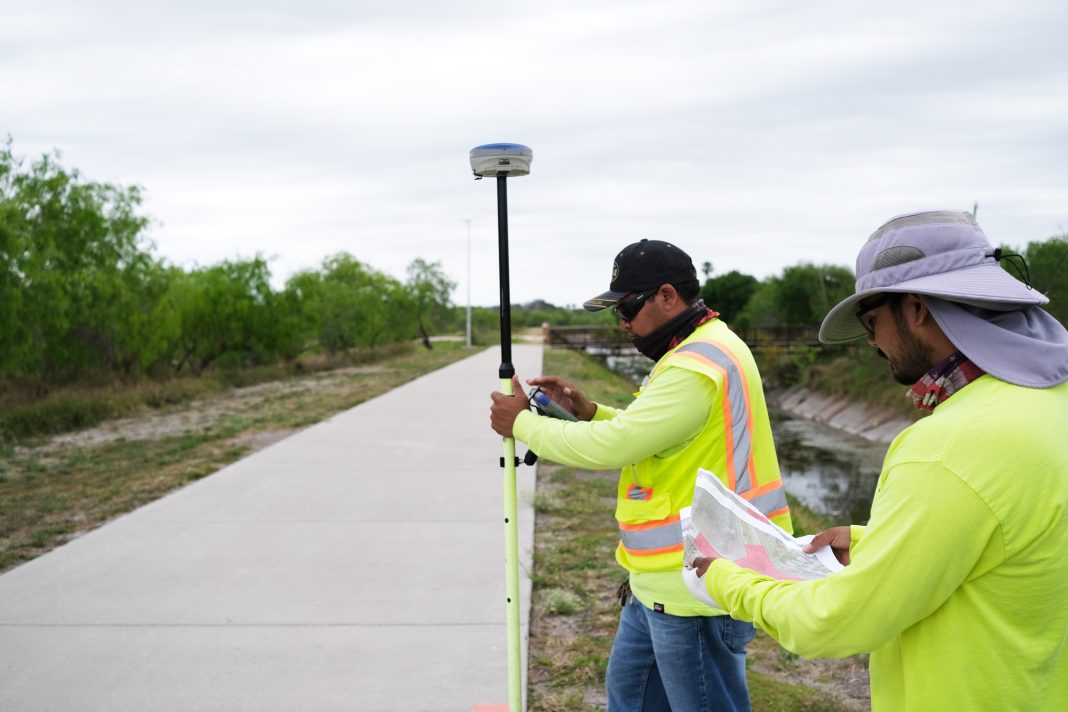Brownsville residents in flood-prone parts of the city will have an easier time keeping their feet dry once several major drainage projects are complete sometime late next year.
City Manager Noel Bernal recently discussed the various projects with The Brownsville Herald, noting that they’re being made possible by the city having restructured its debt in 2019, freeing up $30 million that allowed the city in 2020 to leverage a zero-interest, $7 million loan through the Texas Water Development Board.
The “upwards of $25 million” in drainage projects underway is likely the most substantial drainage-improvement effort the city has undertaken at one time, he said. The work is being locally funded except for $13 million in federal funding from the $1.9 trillion American Rescue Plan Act, signed into law by President Biden last year.
“We have a pretty diverse set of improvements,” Bernal said.
The upgrades include $1.3 million in improvements to existing stormwater infrastructure in the West Brownsville District that will alleviate flooding within a 10-block radius in the flood-prone part of town by shortening the distance stormwater has to travel to reach an outfall point, in this case the Rio Grande.
Another $1 million will go to replacing eight resaca culverts, three each on Resaca del Rancho Viejo and Resaca de la Guerra, and two on the North Main Drain, a primary drainage basin. The project will also involve replacing the old manual equipment for raising or lowering flood gates in preparation for flood events with a Supervisory Control and Data Acquisition (SCADA) equipment.
“Basically it’s remote monitoring,” Bernal said. “We’re going to have a fully digital system by installing sensors throughout different parts of our resaca system.”
A major drainage project involves the Impala Pump Station, which is in Southmost and drains about half the city, he said.
“We’re replacing that pump for the first time in over 60 years,” Bernal said. “That pump was built in the ’50s and we’re doubling the capacity of the pump.”

In addition, the roughly $13 million in ARPA money will be used to create a regional drainage-detention facility adjacent to the pump, a need first identified in the 1980s though there’s never been funding to do anything about it, he said. Once the project is complete, water that used to stand in neighborhoods will flow into the detention pond and then be pumped out by the new and improved pump system, Bernal said.
“Those are significant projects because there’s synergy,” he said. “We were already fixing the Impala pump, but now we’re coupling that with the increased detention area on site.”
Another project is the Southmost Waterplein Park, a 10-acre detention pond that will double as a park when dry. It’s a $1.8 million, low-impact, green-infrastructure project in the flood-prone Four Corners area, Bernal said. There may still be flooding during particularly intense period of rainfall, but it will provide “major alleviation” nonetheless, he said.
“Generally speaking, this will provide an alternative in an area now where that water can flow to,” he said. “It will provide significant improvements. There will be a lot less occurrences of standing water and flooding at the Four Corners area. … It was an innovative way of not just putting a hole in the ground so to speak, but also creating some usable park space out of it. It’ll be an amenity for the Southmost area, but primarily the purpose is drainage.”
Construction on all projects will begin this year. Once they’re finished, residents will notice the difference, Bernal said.
“It’s one of our basic, bread-and-butter needs,” he said. “I think as a city when you ask community members what their needs are, you typically hear a lot of bread and butter: streets and drainage. It’s hard to get away from that because that’s what they live with every day.
“We want to minimize flooding, we want to protect lives, we want to protect property, and we’re meeting some of our most basic needs when it comes to drainage here.”





